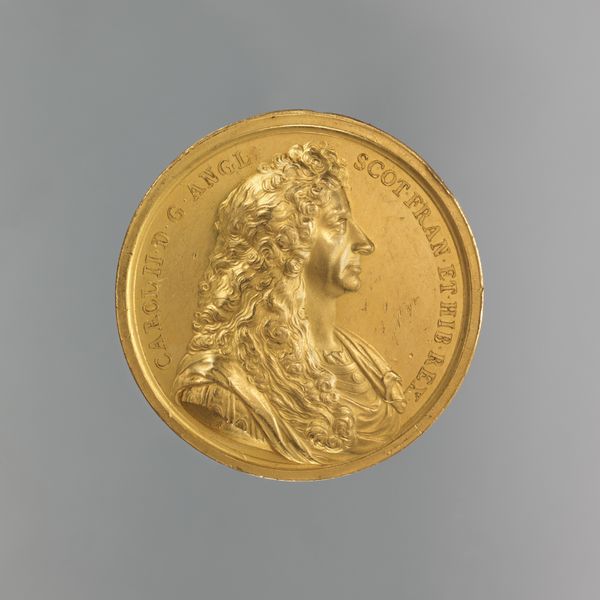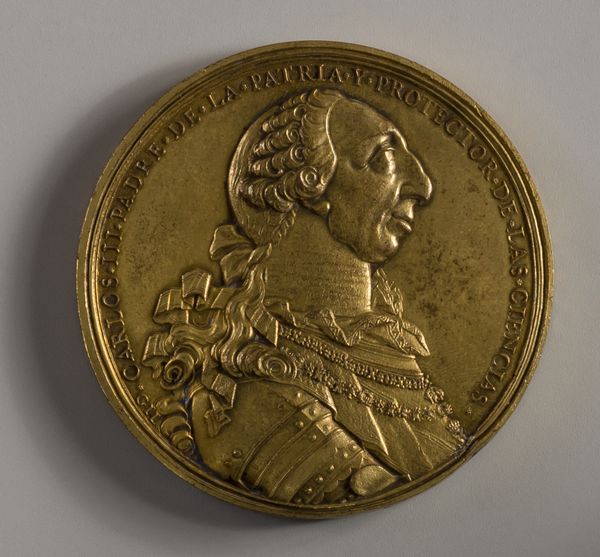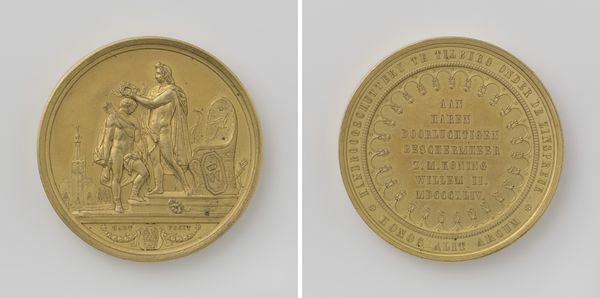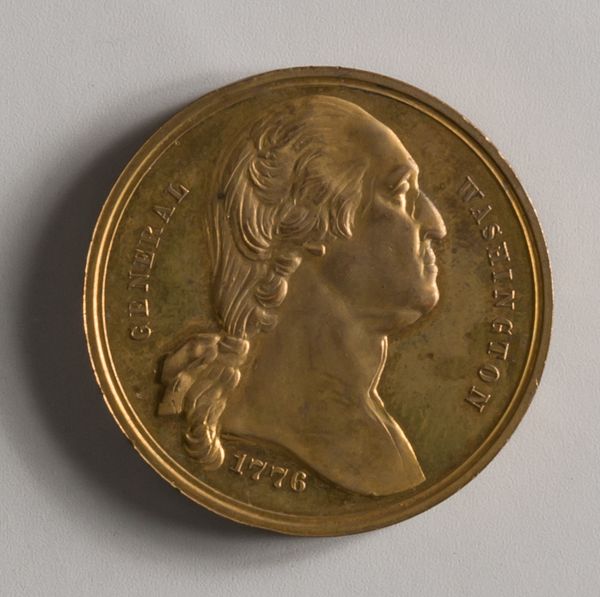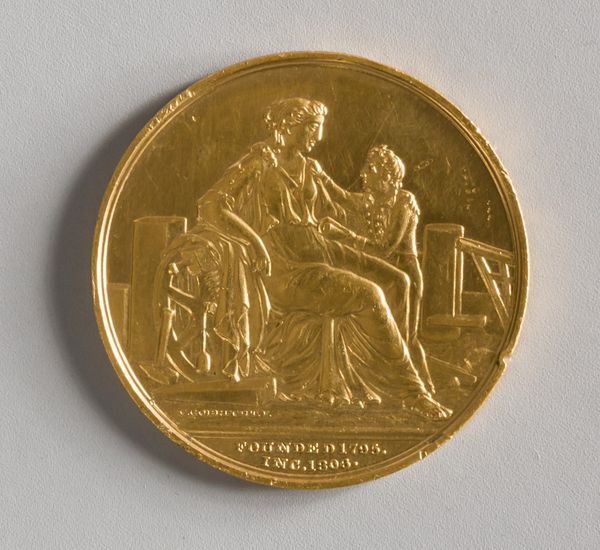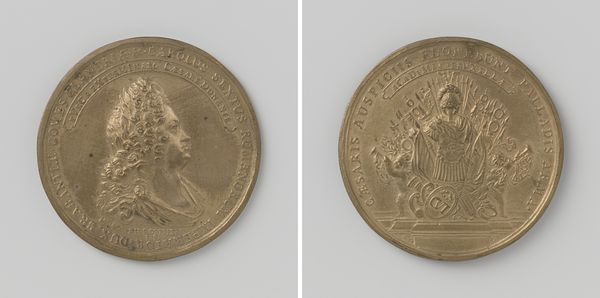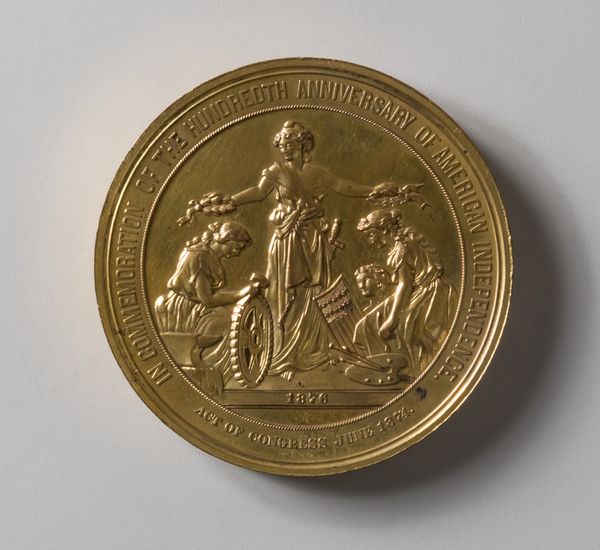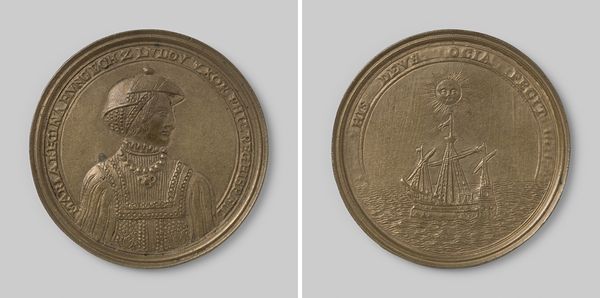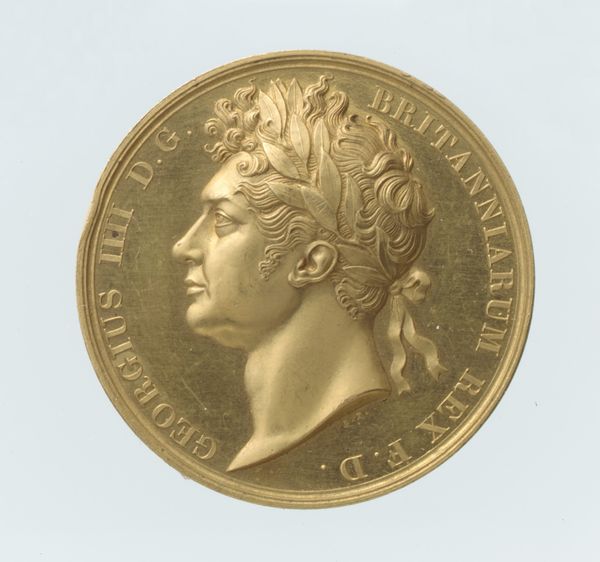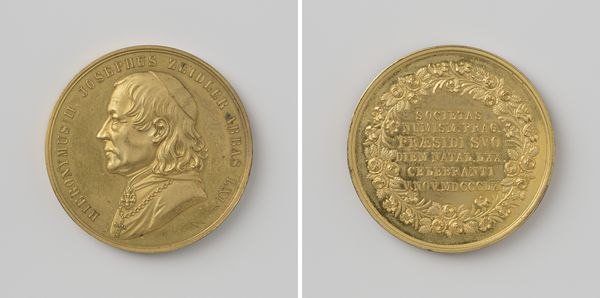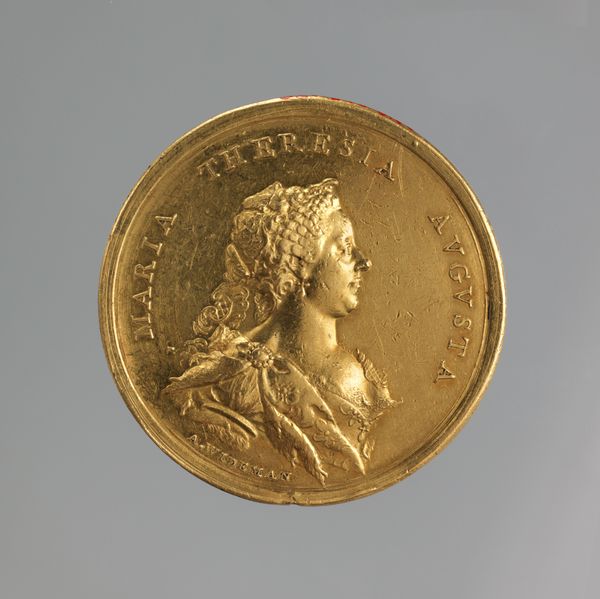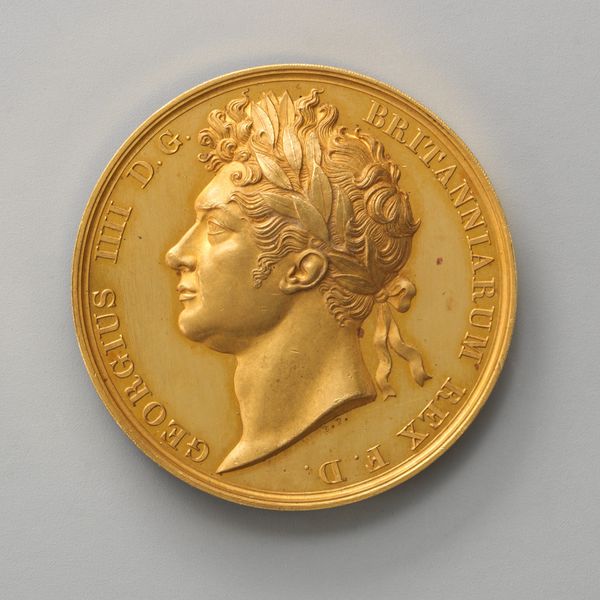
Congressional Medal to Cyrus W. Field for the Successful Laying of the Atlantic Cable 1867
0:00
0:00
metal, bronze, sculpture, engraving
#
portrait
#
medal
#
neoclassicism
#
ship
#
metal
#
landscape
#
bronze
#
sculpture
#
men
#
history-painting
#
engraving
Dimensions: Diam. 4 in. (10.2 cm)
Copyright: Public Domain
Editor: This is the Congressional Medal to Cyrus W. Field, made of bronze by William Barber in 1867. It's quite striking – a sort of flattened, sculptural portrait combined with a nautical scene. What stands out to you formally? Curator: Immediately, I'm drawn to the medal's concentric composition. Note the inscription encircling the central image, literally framing the narrative. It creates a sense of enclosure, directing the viewer's gaze inward. And what of the portrait itself? Editor: Well, the profile is quite detailed, almost photographic, against the more stylized depiction of the ships and waves. Is that intentional, do you think? Curator: Precisely. Consider the juxtaposition. The crisp realism of Field's bust contrasts with the almost allegorical seascape. It suggests a tension between the individual achievement and the broader technological triumph, with an idealized interpretation. What about the use of relief? How does that contribute to the overall aesthetic? Editor: The varying depths of the relief create a sense of depth, despite the flattened form. It gives the ships a kind of three-dimensionality against the smooth background, right? And then the lettering almost blends in. Curator: Observe also the textured surface of the bronze. Its tactile quality invites closer inspection, highlighting the materiality of the medal. This tactile experience reinforces the object's presence. Do you find it succeeds visually, irrespective of its historical value? Editor: I think so. The balance between portraiture and the overall scene makes for a dynamic piece, even today. It really pushes you to consider the artistry beyond the subject matter. Curator: Indeed. It reveals how skillful manipulation of form, texture, and composition can elevate even a commemorative object to a work of art. Editor: I hadn't considered the importance of texture until now! Thanks.
Comments
No comments
Be the first to comment and join the conversation on the ultimate creative platform.
